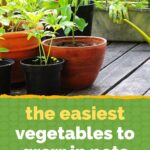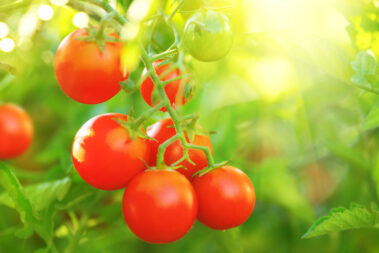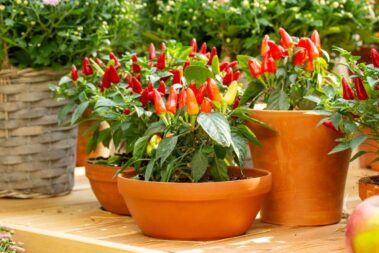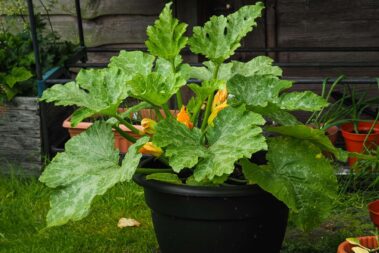Growing your own veggies isn’t just a delicious hobby, it’s also a more sustainable way to feed yourself. But, for so many of us living in tight quarters, growing our own food just isn’t possible.
Or is it?
Container gardening is a great way to enjoy fresh produce without a trip to the market. And you don’t need a ton of space or experience to do it.
With the right plants and the right tools, just about anyone can grow their own vegetables in pots on a modestly sized patio, doorstep, or balcony.
Table of Contents
The Best Veggies to Grow in Containers
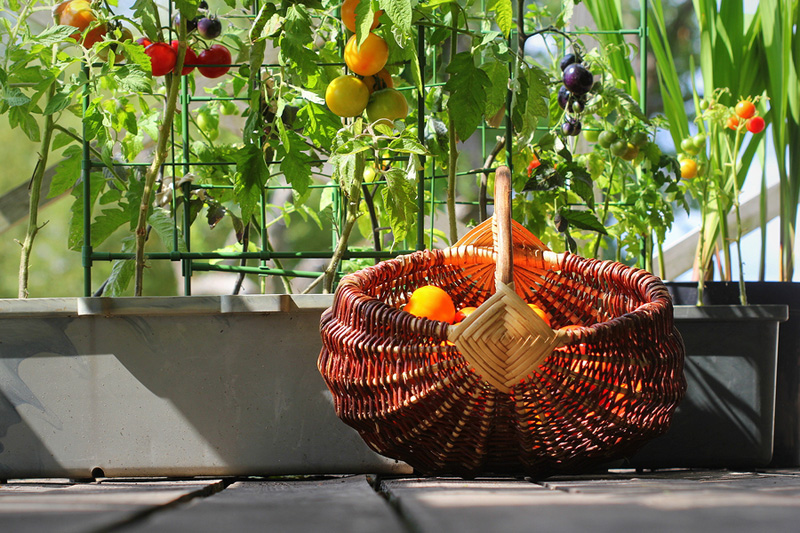
One of the benefits of container gardening is that it doesn’t take nearly as much work as caring for a garden bed. Typically, you have a lot fewer weeds and pests to contend with, making for an easier garden experience for beginners.
On the flip side, growing vegetables in pots can mean smaller plants and a smaller veggie yield. To overcome this issue, it is best to choose plant varieties that can thrive with less space.
Here are 10 of the easiest vegetables to grow in pots.
1. Tomatoes

Look for tomato varieties that are marketed to be grown in pots or bushy cherry tomato types. These plants enjoy a lot of heat, moist soil, and direct sunlight.
Make sure to use a heavy pot or one that can be anchored to avoid tipping as the plant grows. Use a tomato cage or lattice to support the limbs as the fruit starts to develop.
Cherry tomatoes are especially well suited to growing in containers. If you like them as much as we do, be sure to check out our best tips for growing cherry tomatoes in pots.
2. Peppers

Peppers are another veggie that enjoys a lot of sun and heat. They need consistent watering and good drainage, especially when growing them in pots.
As a bonus, these plants come in a variety of fruiting colors and will add a beautiful splash of color to your patio or entryway. Bell peppers are one of the most popular choices, but smaller varieties, like jalapenos and baby belles, are easier to grow in pots.
Choose hot or sweet varieties to fit your taste.
3. Lettuce & Salad Greens
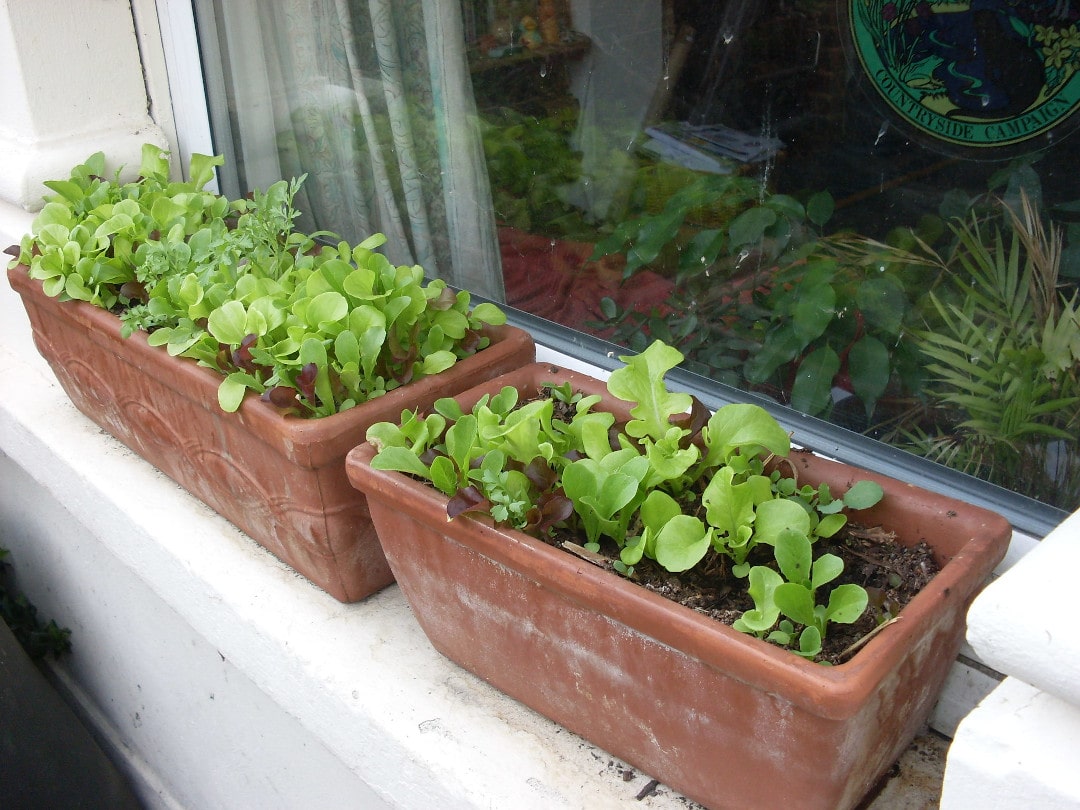
Leaf lettuce, Swiss chard, kale, and spinach all do well in shallow containers. Plant lettuce and chard early in the season and harvest often.
Once these plants go to seed, remove them and replace them with warm-season greens like spinach and curly kale.
4. Beans
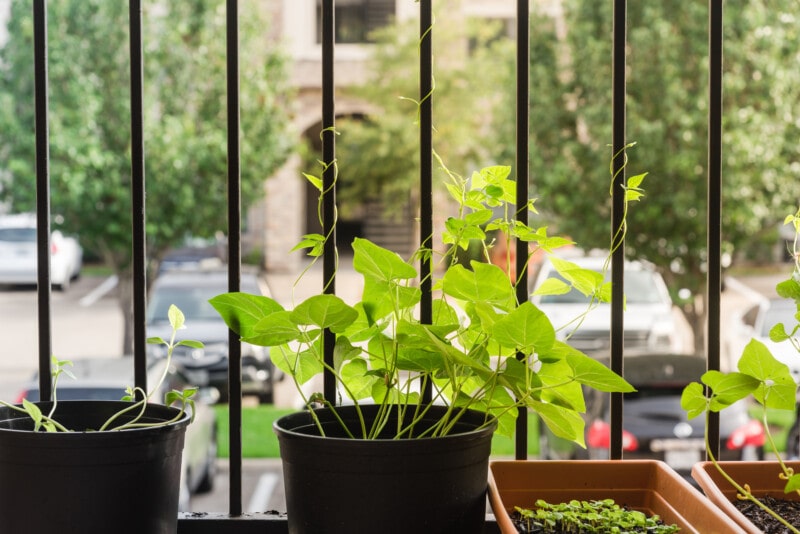
There are a huge variety of beans to choose from. Pole beans, which include most green bean varieties, have long vines that make them hard to grow in pots. But bush beans, which are short and bushy, make excellent choices for a container vegetable garden.
Beans like to climb, so if you want to grow them in pots, you’ll need to attach a lattice to the pot. As with all high-profile veggies, make sure you use a deep, heavy pot to avoid tipping and give the roots plenty of room to anchor.
Most varieties produce plentifully and quickly. Legumes also fix nitrogen, making them a great companion plant to nitrogen-hungry veggies like kale and other leafy greens.
5. Peas
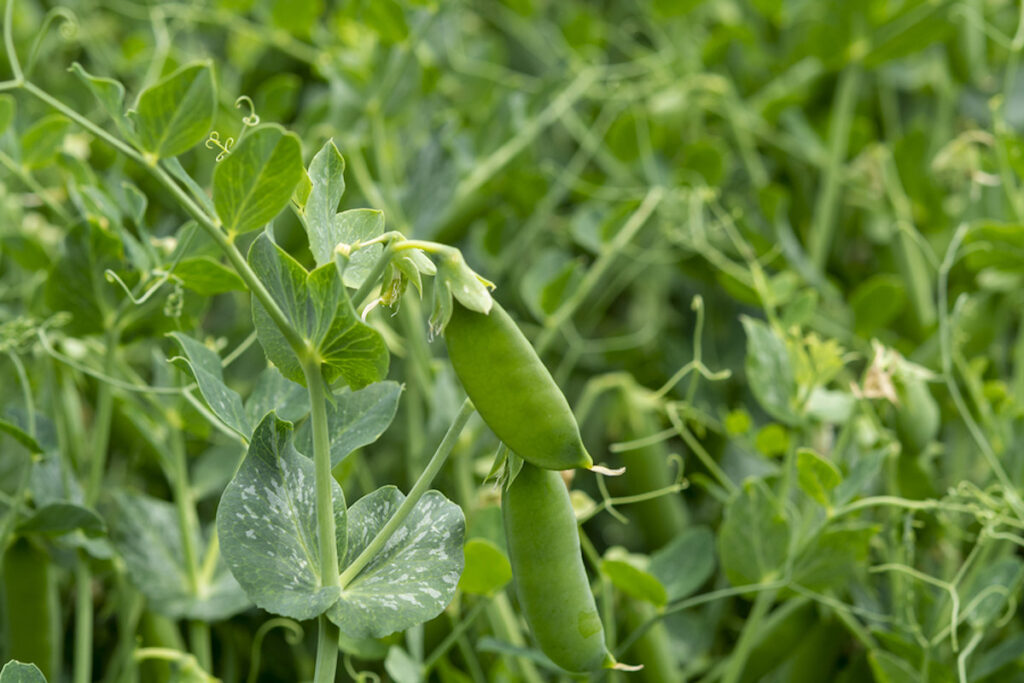
Like beans, peas grow fast and provide a ton of fruit. Plant these legumes early in the spring when temps are still cool. Provide a lattice for climbing and remove the plants once they start to dry out in the summer.
Since peas also fix nitrogen, the soil will be full of nutrients and ready for your hot season veggies like zucchini or cucumbers.
6. Carrots

Here is another cool-season plant to consider. Carrots need a lot of water but grow well in pots with varying amounts of sunlight.
Dwarf varieties do well in shallow pots but make sure you use a deeper pot for any larger types. Start from seed and enjoy all spring.
7. Radishes
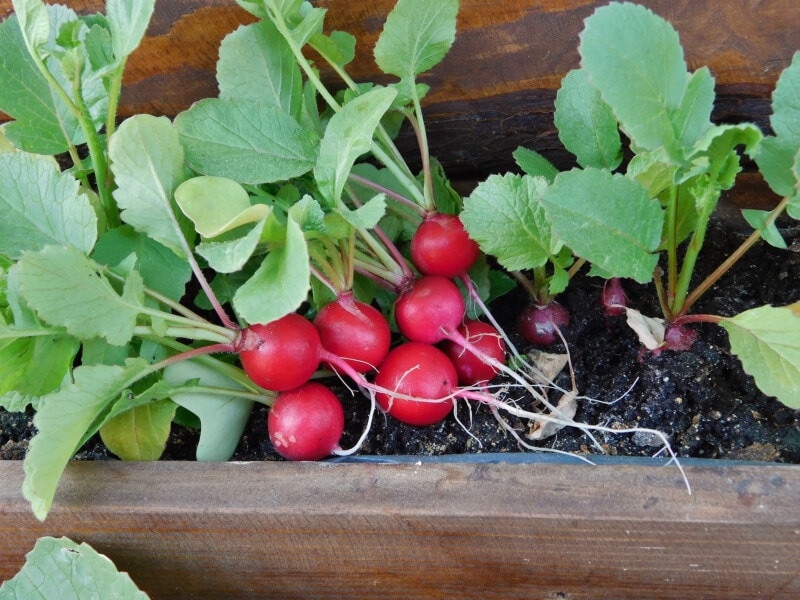
Radishes are another great plant to start from seed. They grow very quickly and you can usually get a few rounds in before the weather gets too hot.
While these are typically grown for their root, don’t forget that the greens make a yummy, spicy addition to salads.
If you have success growing radishes, you may want to consider trying your hand at beets, too. These root vegetables take longer to mature but have similar growing requirements.
8. Zucchini
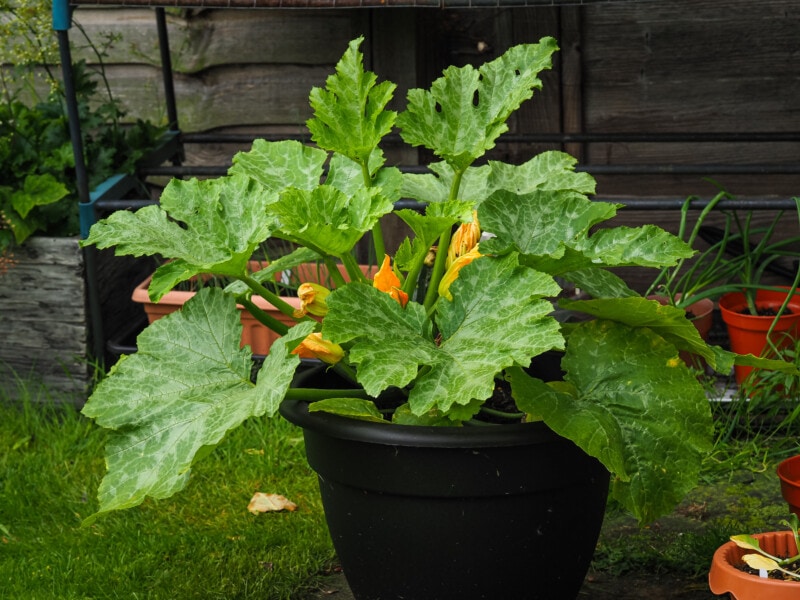
Zucchini is another prolific plant you can grow in containers. The viny versions of this summer squash need to be trained up a trellis and can take a little more work to tame when grown in a pot, but they will reward you with plenty of fruit. Bush varieties are also available.
Zucchini like full sun and consistent watering.
9. Cucumbers
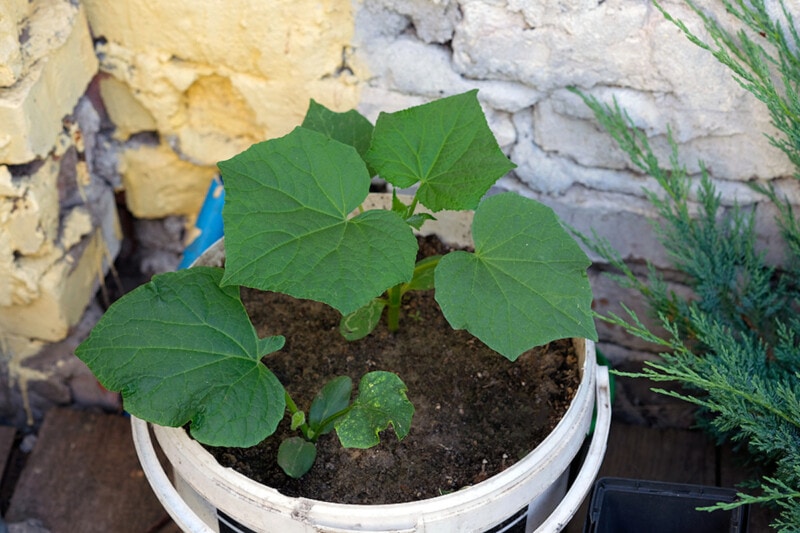
Cucumbers are similar to zucchini in care and structure. There are a variety of sizes and types to choose from, but those with smaller fruit are easiest to tame to a container. Provide plenty of water and full sun and follow these tips for growing them in pots.
10. Herbs
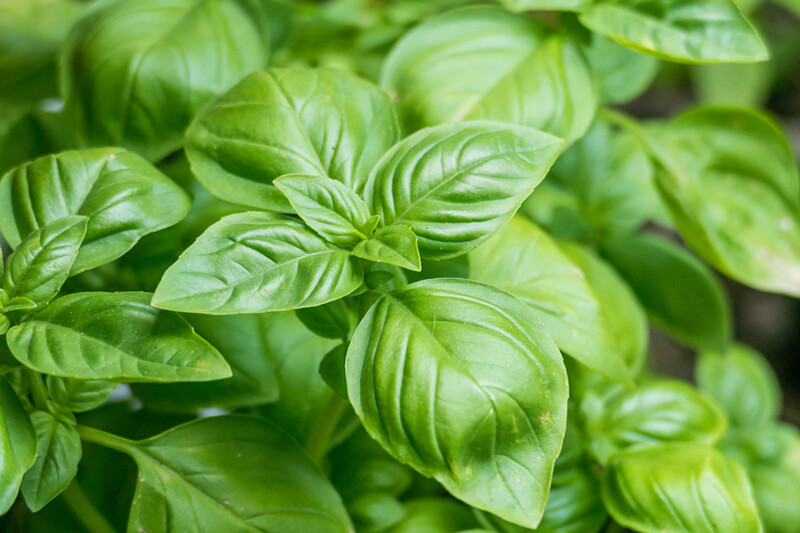
Their smaller structure and frequent use in the kitchen make herbs a no brainer to grow close at hand. Exact care varies depending on the type you choose, but most can be grown throughout the spring and summer.
You can even grow many herbs all year long by placing them in a south-facing window. Some of our favorites for containers are chives, basil, cilantro, oregano, and thyme.
Container Gardening Basics

Now that you’ve chosen which plants you want to grow, it’s time to set up your containers. What pots to choose, what to fill them with, and where to put them will all depend on the plants you want to grow and your container garden location.
Choose Your Pot
Ceramic, plastic, bamboo, or wood? Planter pots come in a wide range of shapes and materials. But, for the most part, what your pots are made out of isn’t nearly as important as their size and depth.
Choosing large, deep containers will allow you more options in terms of plant selection. They’ll also hold water longer, saving you a little time and effort.
Some plants, like zucchini and beans, require medium to large pots to accommodate how tall they grow. Especially hot patios and porches will also require bigger pots to avoid overdrying in the sun.
But don’t shy away from shallow pots with lots of surface area, either. They are perfect for growing short veggies like lettuce and spinach.
Even smaller pots can work if the space requires. Herbs and other shallow-rooted plants will do just fine in these containers so long as they stay moist.
Whatever container type you choose, make sure it has holes in the bottom for adequate drainage. You’ll also want to consider the color. Black pots will mean warmer soil, which is perfect for hot veggies like tomatoes and peppers. But they will also require more frequent watering.
Mix the Perfect Soil
Even more important than the pots you choose, is what you fill them with.
Organic potting mixes are made to hold water better than garden soil and will make a great base for any container garden. But, to up your growing game, you’ll want to add equal parts soil, sand, and peat moss or compost.
Sand will help the pots drain better, which means more oxygen for your plant’s roots and less chance of rot.
Peat moss is a great way to acidify your soil for sweet peppers, tomatoes, carrots, cucumbers, and other plants that like a lower pH. For plants that prefer neutral pH soil, like greens and sweet peas, choose an organic compost instead.
Find the Right Spot
Once you have your containers filled and ready, it’s time to find the best place to put them.
A south-facing patio or balcony is optimal for most vegetables that need six hours or more of sunlight a day. Hot plants like tomatoes and peppers will thrive in direct sun and a lot of heat, but make sure you can provide frequent enough watering to keep the soil moist.
If you have a north-facing patio or balcony and sunlight is limited to fewer than six hours a day, consider growing veggies that do better with cooler temps and less sunlight like greens, carrots, and peas.
Another aspect of placement to consider is wind. Tomatoes, legumes, and squash are all high profile container plants that can easily be knocked down in a hard wind. Consider placing these pots against a wall or securing them to a railing.
Water, Fertilize, and Enjoy!

After you have your pots in place, it’s time to plant your seedlings or sow seeds. This is typically done in early spring for warm climates or after the last frost date for areas with cool weather.
Once you have your new container veggie garden planted, don’t forget to water frequently. These vegetables require constant moisture but dislike oversaturated soil. Since pots dry out quickly this may take some extra commitment.
You’ll also have to fertilize frequently (every two to four weeks) to replenish nutrients that watering removes.
With a few pots, the right plants, and a little dedication, even those without yards can enjoy the benefits of fresh vegetables all season long.
- How to Pick the Perfect Watermelon For a Sweet Summer Treat - April 10, 2024
- Future Kind’s Foundations: A Multivitamin Made for Vegans - December 5, 2023
- Does Nutritional Yeast Go Bad? - November 28, 2023


